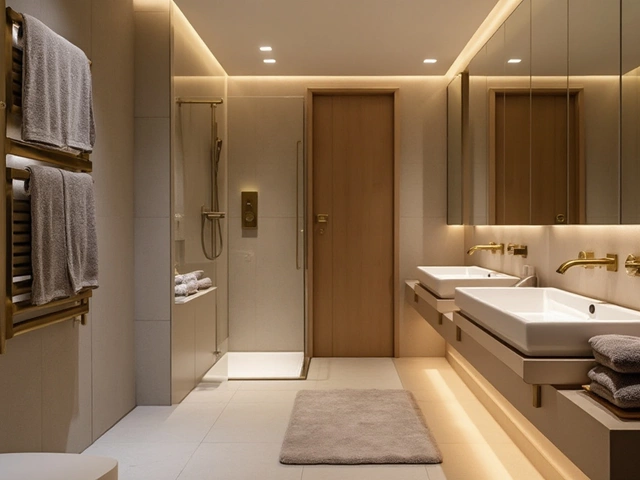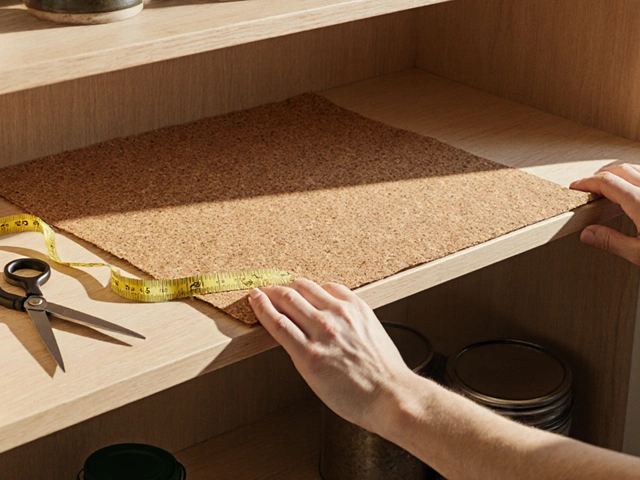Adjustable beds might sound like the perfect solution for catching those elusive Z's, but they're not a one-size-fits-all kind of deal. If you're battling with certain health issues, an adjustable bed could be more of a hassle than help. For instance, if you have severe arthritis, constantly changing the mattress angle could aggravate joint pain rather than relieve it. It's crucial to weigh these health factors before investing in such a bed setup.
Then there are folks who just aren't that into the techy side of things. Many adjustable beds come with remotes and interesting features that some people find downright intimidating. It's like being handed the controls to a spaceship when all you really wanted was a good night's sleep. If gadgets and electronics aren't your cup of tea, you might find an adjustable bed's features more frustrating than fascinating.
Health Concerns
While an adjustable bed seems like a cozy invention, it's not ideal for everyone, especially if you've got some specific health issues. Take spine problems, for instance. If you suffer from a herniated disc, sometimes the recline feature doesn't support your spine the way a flat surface would. It's always best to consult with a healthcare professional before making the switch.
Impact on Circulation
Concerns about blood circulation are also worth noting. Sure, elevating your legs can help reduce swelling, but if you have circulation issues or varicose veins, you may need to pay extra attention to how often and how long your legs are elevated. Too much time at the wrong angle might just worsen things.
Breathing Problems
Then there’s the sleep apnea clan. Adjustable beds can offer some relief by keeping the upper body elevated, but they aren’t a guaranteed fix. For those with severe forms of apnea, a CPAP machine might still be necessary. Choosing the right angle means experimenting a bit to find what really helps while avoiding positions that might cause more harm than good.
Risk for Pressure Sores
If you’re someone with limited mobility, there's also the risk of pressure sores. Adjusting the bed frequently might reduce this risk, but an incorrect angle could increase pressure on some body parts. It's a delicate balance between finding comfort and avoiding harm.
So, before you dive headfirst into this trendy sleeping solution, it's wise to assess these health concerns carefully. A simple chat with a doctor could save a lot of potential trouble down the line.
Technology Discomfort
For some, an adjustable bed feels like stepping into the future. But not everyone is ready or willing to embrace this technological leap in their bedroom. Older individuals or anyone uncomfortable with electronics might find adjusting the bed a bit challenging.
Most adjustable beds come with a plethora of features like remote controls, USB ports, and even voice command capabilities. While these features sound exciting, they can also overwhelm someone who's not tech-savvy. Imagine fumbling with a remote or app just to find the right elevation for a good night's sleep—a simple act becomes a nightly chore.
Navigating Complex Controls
If you aren’t used to modern gizmos, the multitude of buttons and settings on an adjustable bed's remote can feel like a complex puzzle. Opening the manual every time can be time-consuming and frustrating, making it less likely that you'll actually use all those features you paid for. It might seem easier to stick with a straightforward, non-tech bed.
Potential Technical Hiccups
Let's face it—anything tech-related can glitch. From remotes losing battery to app malfunctions, technical hiccups might disrupt your sleep more than you’d like. If you're someone who's not interested in troubleshooting devices or dealing with tech support, the convenience of an adjustable bed might not be worth the potential hassle.
And then there's the noise factor. Adjusting the bed can sometimes generate noises that disrupt the tranquility of your sleep environment. It's like hearing a gentle hum that your partner might find relaxing, but for you, it’s just added stress.
Health, comfort, and simplicity—these should be your guiding factors when choosing bedding. If technology discomfort outweighs the benefits for you, it might be wise to reconsider whether an adjustable bed suits your needs.

Mobility Challenges
Adjustable beds aim to make life easier, especially when you have mobility issues, but guess what? They can sometimes do the opposite. If you or a loved one is struggling with significant mobility challenges, even the so-called simplest tasks, like getting in and out of an adjustable bed, can become tricky.
For example, the constant movement these beds offer might make it feel unstable for someone relying on a steady surface. There's also the issue of height variance. Some models might lower or raise more than expected, making it harder for individuals with limited strength or balance to transition smoothly.
Getting In and Out: A Real Concern
Getting into bed should feel as easy as lounging on your couch, but for those with mobility issues, it's not just about plopping down after a long day. If an adjustable bed doesn't match your strength and ability level, it might feel more like conquering a mini hurdle every time you lie down.
For those using tools like walkers or canes, these beds can be particularly problematic. They might need extra help to adjust the bed safely, only adding to their frustration.
Stats and Facts
Did you know that about 15% of the population aged 65 and over face serious mobility issues? They often need a sleeping surface that provides both comfort and easy access.
| Age Group | Mobility Issue (% of Population) |
|---|---|
| 65+ | 15% |
| 70+ | 23% |
So if you're considering an adjustable bed and mobility is a concern, it might be worth trying one out in person. Navigating potential challenges now could save you both money and hassle in the long run.
Aesthetic Preferences
Let's face it, not everyone is thrilled about having an adjustable bed in their bedroom. These beds often look more like hospital beds than a cozy spot to unwind, which can really cramp your decor style. Especially if you're all about aesthetics, having a bed that screams 'function over fashion' might not be what you're going for.
When you're creating a serene environment to relax in, visual appeal matters. Adjustable beds, with their bulky mechanisms and more industrial designs, might clash with sleek, minimalist decor or a themed room setting. If you love your bedroom to be a peaceful sanctuary or a chic space filled with carefully chosen furnishings that include soft cushions, an adjustable bed can feel like an eyesore.
Additionally, the base of an adjustable bed is often bigger and chunkier than traditional bed frames. This can make the room look cramped, especially in smaller spaces. If you're tight on space or value having ample room around your bed, sticking to a regular bed might be more visually pleasing.
For those who want to keep their room tech-free, the presence of motorized bed parts can also be distracting. You might love the clean lines of a simple, non-mechanical bed that doesn’t require a power source, allowing for a more flexible room layout.
Moreover, your choice might come down to a personal belief in simplicity and traditionalism. If you're someone who finds comfort in classic styles and wants your furniture to reflect that, you might find greater aesthetic satisfaction in beds that align better with your personal taste and lifestyle needs.







